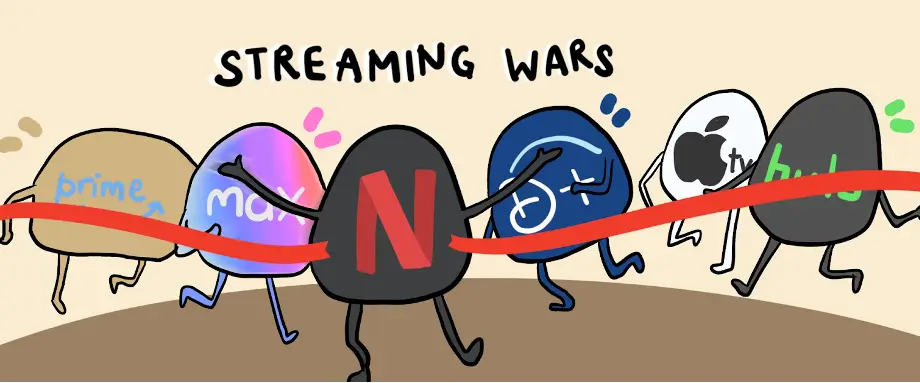Source Filmmaker (SFM) is a powerful tool developed by Valve for creating animated films using assets from video games like Team Fortress 2, Counter-Strike: Games based on the Source game engine produce content for Team Fortress 2 and Counter-Strike: Global Offensive. Digital artists and beginners can now create 3D animations and movies with help from this simple platform. However, for users seeking to make their work more efficient and flexible, understanding how the SFM compile process works is essential.
This article examines Source Filmmaker (SFM) compiling and its practices. We will explain SFM compiling, including its specific working method, and show why it matters while pointing out issues users experience and offering effective ways to produce efficient results. Whether you’re just starting or looking to refine your skills, this guide will provide you with the necessary tools to master the art of SFM compile.
What is SFM Compile?
When you combine your SFM project files using our tool, it creates renderable output. Your SFM projects contain models, animations, textures, lights, and sound files that you must work with during scene creation. All source files must go through the packaging and preparation steps to become formats the Source engine can read and use to make video output.
The compilation process needs all raw assets before converting them into efficient data for rendering. When you compile your project, this ensures that the game engine reads and displays your project correctly.
What Value Does Compilation Bring to Source Filmmakers?
Compiling is essential in SFM because it serves two key purposes:
1. Optimizing Performance
During SFM compilation, you process your project contents and optimize them for faster rendering performance. This process reduces performance issues, so your animation works better during playback and export.
2. Creating Correct Output Formats
Only part of your assets can be used without special processing in Source engine applications. Source engine requires you to convert animations into compatible output formats such as .qc or .mdl files. The SFM compiler ensures that all your assets are correctly formatted and structured for proper display and use in the game engine.
The SFM Compile Process Explained
The SFM compile process can be broken down into several steps:
Step 1: You Need to Set Up Your Scene with All Its Assets
To start compiling, you need to verify that all your assets have successfully entered the SFM software database. The SFM compiler requires all game assets, including models, textures, animations, sound effects, and lighting sources.
- Models: Make sure models are supplied with suitable bone connections in their approved file type (.mdl).
- Textures: Use files in .vtf format for your textures since they work with the Source engine.
- Animations: The source must accept the final animation files, which typically take .smd or .anim formats.
- Sounds and Music: Use direct links to connect your scene to supported audio file types, including WAV and MP3.
Be sure to link all your assets with the SFM project files correctly. When compilation fails, you might have a missing file or an incorrect connection entry.
Step 2: Using the SFM Compiler
Once you’ve organized your scene and assets, it’s time to move to the SFM Compiler tool. The SFM Compiler is typically located in the Source Filmmaker/SDK folder and joins Source models, animations, and textures into Source Engine-readable formats.
- Model Compiling: Most SFM models require conversion to .mdl files through the tool. The Studiomdl utility converts your raw .smd files into the finished .mdl files the Source engine requires through its processing steps. The Source engine needs this format to read 3D models.
- Animation Compiling: When you develop original animations, you must convert them into the .ani or .smd file types for Source engine preparation. These formats contain animation data and allow you to use the data with SFM models.
- Texture Compiling: SFM requires users to work with .vtf texture files, which are the standard image format here. All textures must pass through the VTFEdit tool before they can serve their function in the scene. VTFEdit prepares your textures for reliable work on Source engine platforms.
Step 3: Error Checking and Troubleshooting
Whenever you run compilation, you may find error messages and warnings. The SFM Compiler provides an output log that helps identify and debug issues.
Some common errors include:
- Missing Assets: When you forget to add an asset, the compiler shows you that the file cannot be located.
- Incorrect File Format: The compiler needs proper file formats to operate but stops working with format issues.
- Outdated Scripts: The scene’s outdated scripts can prevent the compiling procedure from proceeding. Constantly update your entire script library with the latest versions.
Study your output log carefully to discover why the compile process failed.
Step 4: Rendering Your Animation
After your assets pass compilation successfully, you can start rendering the animation. After compiling your files, you convert them into video formats such as .mp4 or .avi through rendering.
During rendering, SFM utilizes the generated assets to present the animation while producing the final result. Your computer’s rendering procedure depends on the number of objects in your scene and the strength of your machine.
Common Pitfalls in SFM Compile and How to Avoid Them
While the SFM compile process is straightforward, a few common pitfalls can arise. We’ll discuss typical SFM problems and their solutions.
1. Unoptimized Assets
Source Filmmaker needs optimized assets to prevent crashes during the compile process. Large textures and high-poly models take too long to complete processing. Keep your Source Filmmaker assets optimized to run well during operations. Lower texture details and reduce model complexity to speed up performance.
2. Mismatched File Formats
A single asset needs a dedicated file format, which it should use during compilation. When you attempt to import incompatible file types into SFM, the compiling process stops working. Verify that you supply the appropriate files for model textures and animations before beginning compilation.
3. Incorrect Folder Structure
Users commonly experience problems because their asset files are not organized correctly. SFM needs models to stay in their dedicated file folders while separating textures and sound effects. The compiler needs to find assets in their proper order, so when folders are improperly placed, the program will show missing element warnings.
4. Missing or Outdated Dependencies
Some custom scripts in your SFM work depending on specific files or tools that you need to install when using them. When compiling depends on missing or old library files, it stops working. Keep your script files updated and with working dependencies installed at all times.
5. Render Failures
When you build your project against inadequate system resources, the render process will stop working properly. Make sure your hardware supports SFM visualizations well, including demanding scenes and high picture quality. Lowering scene quality settings will help users avoid this issue.
Best Practices for Efficient SFM Compile
To make your SFM compile process smoother and more efficient, here are some best practices you should follow:
1. Maintain a Clean Project File
Organize your project work better by placing connected assets in separate groups. To better manage your project design, put different types of content into specific folders. This arrangement helps detect and solve issues more easily while you compile your work.
2. Use Prefabs and Libraries
When dealing with several scenes and projects, keep Unity asset libraries and prefabs ready for easy asset sharing across files. Your workflow will become faster because you don’t need to import assets multiple times while maintaining project consistency.
3. Test in Small Sections
Test small groups of assets or separate parts of your scene before working on the whole compile process. Dividing your work into smaller units helps you find issues sooner, simplifying troubleshooting.
4. Optimize for Speed
Observe asset settings and scene elements to decrease build processing time. To speed up processing, scale down textures, use simpler models, and program efficiently.
5. Check Logs Regularly
Check the compiler logs for error messages and alerts every day. Regular inspections of your log will show you problems quickly and create better outcomes for future projects.
Conclusion
In Source Filmmaker, you need to compile functionality to transform your unprocessed assets into finalized animations before rendering. Learning to compile basics and fixing problems helps you build a better animation production process. With the proper preparation and tools, mastering the SFM compile process is a crucial step toward becoming proficient in Source Filmmaker and unlocking your full creative potential.
The compilation process needs individual adjustments because no one solution fits everyone. Repeating compiling tasks will create your workflow, eventually making compilation a regular part of your animation work.






